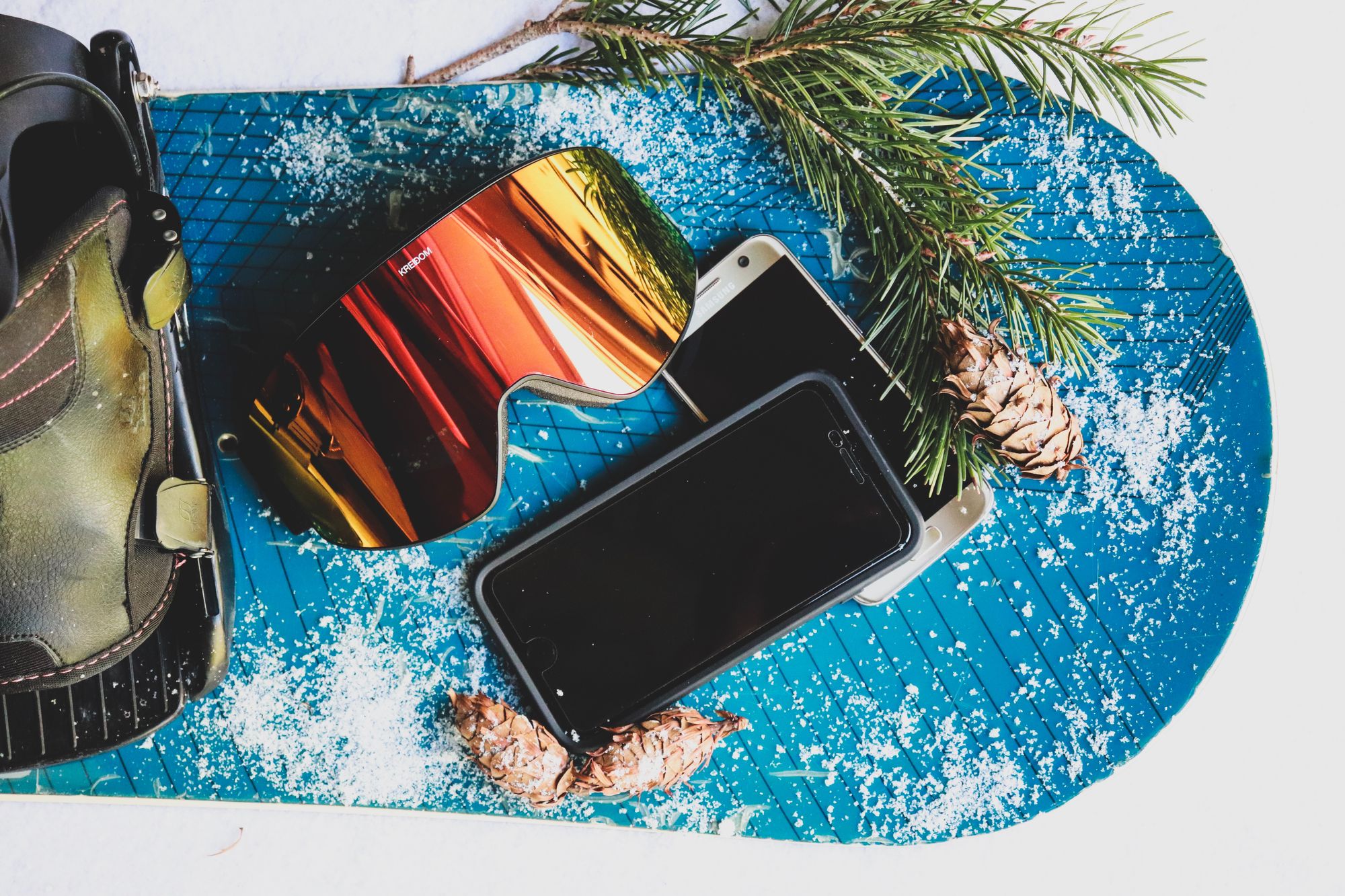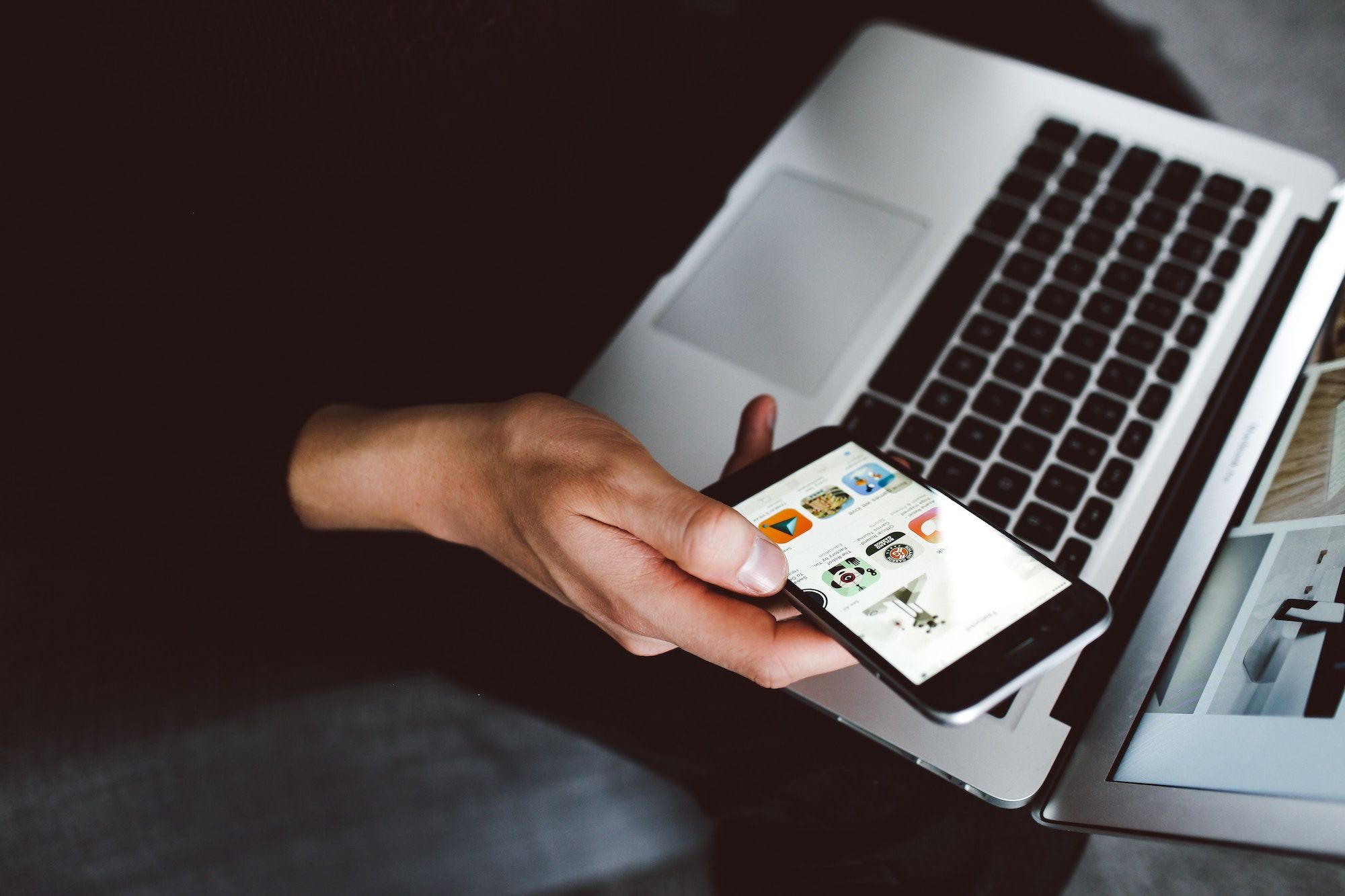
How to Disconnect When Your Devices Are Your Office
Head of Communications & Content @ Buffer
Prefer to listen? Here’s the audio version of this post!
Disconnecting from devices is a challenge for most people. A study of Americans found they check their phones on average 80 times a day! For remote workers, it’s especially difficult if there’s no separation between work and home and your devices become your office.
In fact, this is so much of a challenge that there is a law in France that gives workers the “right to disconnect” from their companies outside of working hours.
This is clearly something that several people struggle with, so I opened up the question of how to best disconnect from devices to the whole Buffer team, a team where we’re all remote and many of us have been for several years now. Here’s our advice on disconnecting from your devices as a remote worker.

Manage Your Notifications
One of the main things that comes to mind when you think of disconnecting is notifications. This study found that people receive, on average, 63.5 notifications per day.
If all of those notifications happened just in an eight-hour workday it would be almost eight notifications an hour. However, we all know that notifications come in at all times of the day, and that’s one of the main tips the Buffer team has on disconnecting.
Turn notifications off on your phone
Phones are really the main device that sit on the fence of being personal devices or work devices, since so much work can be done via phones it’s not uncommon for people to have Slack, Gmail, Trello, and other work applications downloaded on their phones.
Turning off notifications altogether is a popular one for the Buffer team.
One of our teammates, Mike, advises people to just get rid of notifications on your phone altogether. He says the best way to disconnect is to have “no notifications anywhere.”
Another teammate, Julian, avoids notifications by not even having the accounts on his phone. “I don’t have Slack or any work emails on my phone. I’ve had this set up for over a year and it’s been great!”
I’ve personally experimented with turning off Slack and email notifications on my phone and while I was a little anxious at first that I would miss something very important, it hasn’t happened yet and it drastically decreased the number of notifications I get on my phone.
Hide your work email
Another tip from Mike is to hide your email account on your phone to make it harder to access. He says, “I have my Buffer email account hidden on my phone, it doesn’t appear on my aggregated inbox view, so I have to deliberately go there and choose it to see any new messages.”
This deliberate action is a great way to disconnect. Instead of automatically seeing work emails you’d have to consciously click on them, which is hopefully something we would think twice about.
Delete apps if you have to
Do you really have a hard time disconnecting on vacation? One of our mobile engineers, Jordan, says he has to start deleting things if he really wants to avoid checking in on work. “On vacation I just straight up delete Slack, it’s the best tip for me personally that I’ve found to disconnect.”
Sign out of your favorite sites
Another great tip from Jordan is to sign out of work applications that he might want to visit. He says, “I also sign out of work sites that I might visit for my hobbies (i.e. Github) so I’m not tempted to check up on things if I see a notification. I’ll work on side projects to relax and often visit the same sites I use for work so that helps.”
Separate Yourself From Your Work Devices
If you’re serious about disconnecting, sometimes you have to physically separate yourself from your devices to make it possible.
Put your devices out of reach
On Mike’s end, he has a very specific set up to make this possible although he admits it isn’t without its challenges. “I tuck my phone in my backpack when commuting, and when I get home after work I set it to charge and put it in airplane mode until the next morning. Now, I’m trying my best to stay away from it until at least an hour after waking up, but the FOMO is real.”
Having lived in a bachelor apartment at one point and also been working remotely from home, I can confirm that this is possible, no matter the size of your home.
Never work from bed
A key one for me personally has been to set a rule that I’ll never work from bed. One study found that 80% of young professional admit to working from bed, but I’d argue that the mental and physical separation between bed being a place for sleeping and the laptop being a place for work is more important than being majorly cozy while doing work.
Try using one device for only personal use
One of our customer advocates, Kelly, uses her iPad strictly for non-work things. “I started a few creative courses on Skillshare and wanted to keep my iPad fully clean of interruptions so I didn’t link iMessage, social media, or email (personal or work). It’s nice to spend a chunk of focused time on something creative without being tempted to log into Slack or check work email.”

Photo by Lilly Rum
Digitally Separate Your Work and Personal Life
This was one of the most popular tips for the Buffer team with many people either already doing this or keen to implement it soon. The idea is that you have different profiles on your devices for your work and for your personal use.
In the browser
Our marketing engineer, Gisete, uses two profiles in Google Chrome. “So if I’m on my computer on a weekend I’ll just open my personal profile browser window and I don’t get anything from work there.”
You could also do like our teammate Stephanie and use different browsers altogether. “My Opera browser only has work stuff and it’s safely minimized and out of sight on the weekends. Chrome is great for everything else.”
On your operating system
The whole Buffer team really loved the idea from Jordan to create a completely different user in the operating system, for most of us at Buffer that’s macOS. As Jordan put it, “Logging out at the end of the day seems like it would send a nice mental signal to myself that I’m totally done pending an emergency.”
Use different apps
Slack is a really sleek and wonderful app that we all love. Over the last few years, people have branched out and started using Slack not only for work things but also for their families.
One of our engineering managers, Kara, said she had this setup and decided against it. “I had set up a personal Slack team that my husband and I use and I’ve concluded that I need to shut it down and switch to a different method – it’s just too easy to slide into work Slack when I’m sending a list of groceries to pick up. I’ve decided that it would be very healthy for me to use completely different tools for work and non-work things!”
Be Firm About When Your Day Ends
The final, and potentially most important piece of advice about disconnecting is around ending your day. This is something I know remote workers in particular struggle with and I’ve dealt with myself. When there isn’t a clear end to a day, like for most people it would be leaving the office, it’s far too easy to just let yourself continue to be comfortable sitting at home working until far too late in the evening.
Here’s what the Buffer team has to say on this one:
Close your laptop
In an article about remote work lessons, our Director of People, Courtney gave the advice to, “close your laptop and mean it at the end of the day. Work will always be there tomorrow.”
As a few extra steps, Julian says, “I close out all of my work apps on my computer and shut my computer off if I can.”
Mike heartily agreed with this advice. “Plus one on shutting down my computer at the end of the workday, keeping my desktop clean and some todo’s ready for the next morning helps for that. I feel I don’t need to carry over stuff from yesterday.”
Plan for the time after work
Another popular way to disconnect was to have ways to fill your time after work.
According to one of our customer advocates, Julia, “I feel like to really disconnect, I need to take up my mental space with something else. So even if I’m planning on just chillin’ and not doing much, I try to fill my day with things that will replace my work-related thoughts. A really simple one is reaching out to friends I haven’t talk to in awhile, or trying to make new authentic connections.”
Arielle, our community manager, has the same experience here. “I’ve found that scheduling a hard stop to my workday is the best way to disconnect from work! When I have plans to take a class, meet up with friends, or cook dinner for me and my husband, I have a much easier time closing my computer and putting it away for the evening.”
Another one of our customer advocates, Juliet, has found the most success with doing yoga right after work. “I’ve come to love doing 45 minutes to one-hour yoga session after work because one, it forces me to wrap up the day and two, it works wonders to break up my day from work so I hardly feel the urge to use any of my devices afterward.”
Over to You
How do you disconnect from work and from your devices? We’d love to read your advice in the comments!
Cover photo by Adam Adams
Try Buffer for free
140,000+ small businesses like yours use Buffer to build their brand on social media every month
Get started nowRelated Articles

How the Buffer Customer Advocacy Team set up their book club, plus their key takeaways from their first read: Unreasonable Hospitality by Will Guidara.

In this article, the Buffer Content team shares exactly how and where we use AI in our work.

Here we go again. If you work in social media, it’s nothing new to adapt and change your strategy based on the ever-changing algorithms and the rise and fall of social networks. (Who else was on Vine? 🙋🏻♀️) But, of course, we wish you didn’t have to. The latest wave for social media marketers and creators is that TikTok might be banned in the U.S. The short-form video app has become one of the most widely-used social media platforms and is credited with impacting trends and cultural shifts.